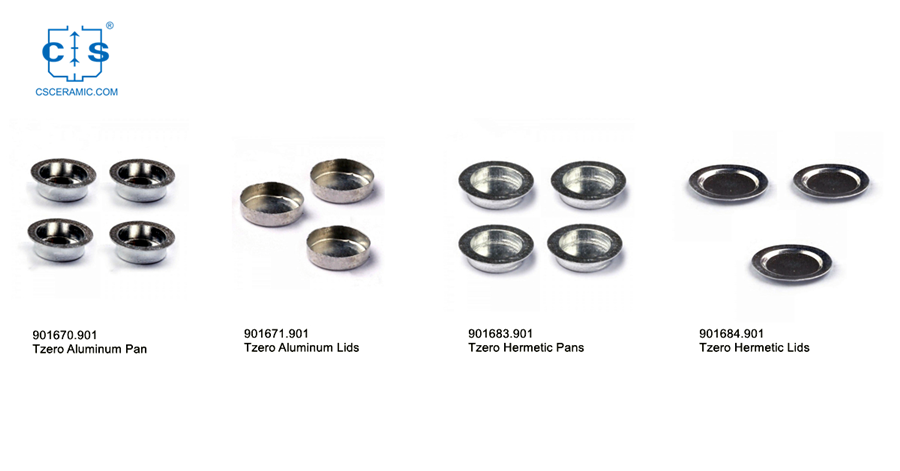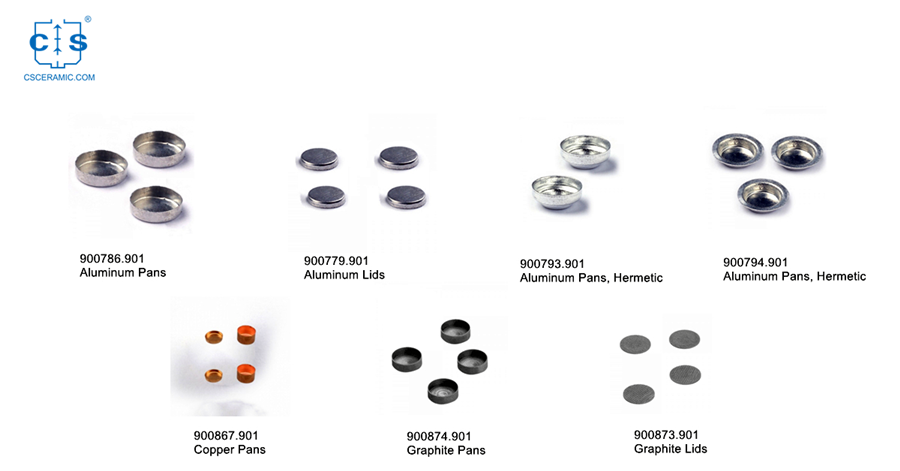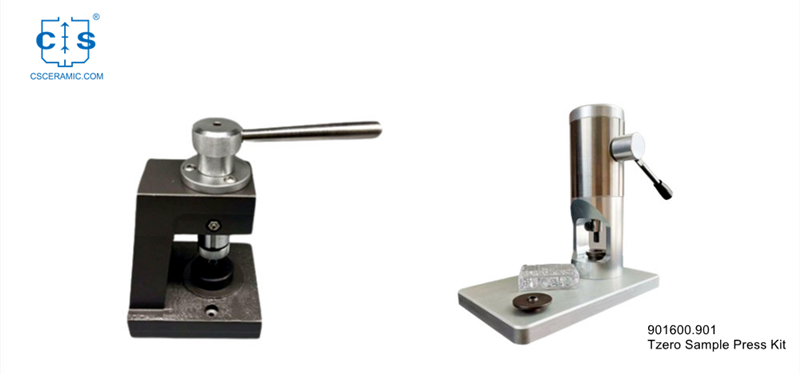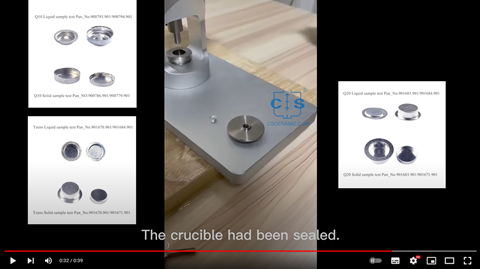Tzero Sample Pans and Lids, Tzero Sample Press Kit
What is DSC?
A Differential Scanning Calorimeter (DSC) is an analytical instrument used to quantify and qualify the thermodynamic transitions of materials. It measures the temperature and heat flow associated with physical transitions, such as phase changes, melting, and oxidation, to provide data on the endothermic and exothermic processes. This data can then be used by scientists and engineers to determine the material processing and end-use performance of their samples. The DSC system is comprised of the analysis instrument and a controller, which is a computer for setting up experiments, entering constants, storing data, and executing data analysis programs. Thus, the DSC is an essential tool for gathering vital information on the thermal characteristics of materials.
Conducting experiments using the Differential Scanning Calorimeter (DSC) typically involves a set of established procedures.
This includes:
A. Setting up external accessories and adjusting them to the desired specifications.
B. The sample must be chosen carefully, taking into consideration the size and weight, as well as the type and material of the sample pan. The sample must then be placed into the pan for further preparation.
C. Inserting the sample pan (and an Autosampler tray that has been readied with an empty reference pan) into the cell.
D. Entering information about the experiment and procedure through the TA controller.
E. Starting the experiment.
Conducting a DSC experiment with TA Instruments Q10/Q100/Q1000/Q20/Q200/Q2000 in specific steps:
1. Setting up any required necessary peripheral accessories (e.g. purge gas, cooling device).
Helium should be employed as the purge gas when a Low-Pressure Cryostat System (LNCS) is being utilized for a subambient experiment. By contrast, if the LNCS is being employed for rapid cooling above room temperature (e.g. isothermal crystallization), nitrogen is an adequate purge gas. For cooling with either an RCS 90 or RCS 40, nitrogen should be used as the purge gas.
NOTE: Be sure to use the same gas for both calibration and experimentation.
2. Preparing a sample of the appropriate size and weight,choosing the type and material of the sample pan, and securing the sample inside the pan with the sample press kit.
The type of instrument and the anticipated range of outcomes should be factored in when determining the size and weight of the sample. Furthermore, the sample pan should be chosen with the same considerations in mind, and it should be constructed from a material that is non-reactive to the sample and does not taint the results.
Replacement Parts are supplied by CACERAMIC as follow.

Tzero Series Sample Pans and Lids
Part No.
Description
901670.901
Tzero Aluminum Pans
901671.901
Tzero Aluminum Lids
901683.901
Tzero Hermetic Pans
901684.901
Tzero Hermetic Lids

|
Standard Series Pans and Lids |
|
|
Part No. |
Description |
|
900786.901 |
Aluminum Pans |
|
900779.901 |
Aluminum Lids |
|
900793.901 |
Aluminum Pans, Hermetic |
|
900794.901 |
Aluminum Pans, Hermetic |
|
900867.901 |
Copper Pans |
|
900874.901 |
Graphite Pans |
|
900873.901 |
Graphite Lids |
The pan should contain the sample. The TA Instruments Q Series Tzero Sample Encapsulating Press is used to put the sample in an encapsulated form for DSC experiments. It is possible to utilize both hermetic and non-hermetic die sets. The TA Instruments Q Series Tzero Sample Encapsulating Press has been made to make encapsulated samples for DSC tests. It has die sets available for both hermetic and non-hermetic sealing.

Tzero Sample Encapsulation Press
Part No.
Description
901600.901
Tzero Sample Press Kit
We would like you to view the video 'How to Use Sealing Press TA Instruments 901600.901' if you're interested.
3. Loading Sample Pans into the DSC Cell
After the sample pan has been set up and the sample information has been logged, it's time to put the sample pan into the DSC Cell. If an Autosampler is utilized, the pans will be automatically placed into the DSC Cell when the Autosampler procedure is commenced.
4. Starting an Experiment
To begin the experiment, press the Start button on the instrument control program, press the START button on the instrument's touch screen, or press the Start key on the keypad (Auto Q20/Q20/Q10). Upon activation, the system will run the experiment until completion.
5. Stopping an Experiment
You have the option to end the experiment whenever you want by choosing 'Stop' in the instrument control software, tapping the 'STOP' button on the instrument touchscreen, or pressing the 'STOP' key on the keypad (Auto Q20/Q20/Q10).
TA Instruments Q series has been designed to work perfectly with CSCERAMIC's replacement parts, making it an excellent option for performing DSC analysis.
Thank you for reading. We invite you to visit CSCERAMIC for more information if you would like to learn more about industrial ceramic material and the thermal analysis consumables we offer.




 info@csceramic.com
info@csceramic.com








 +86 18273288522
+86 18273288522